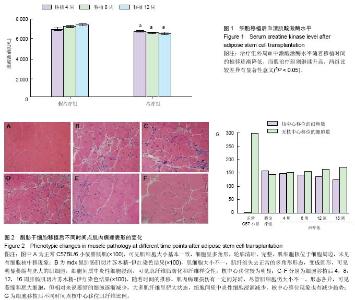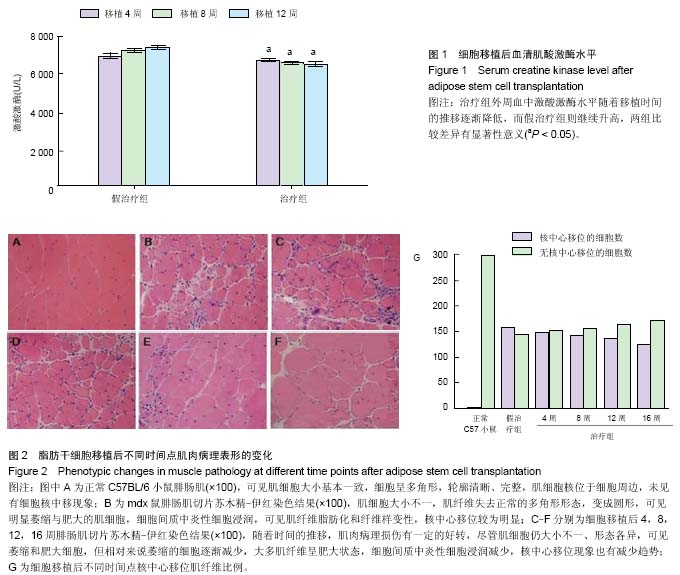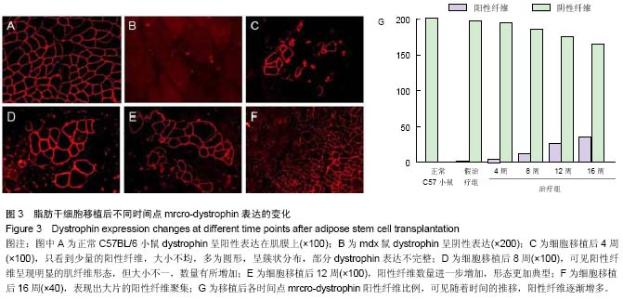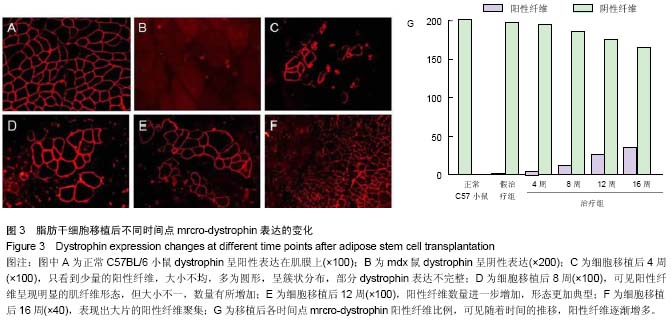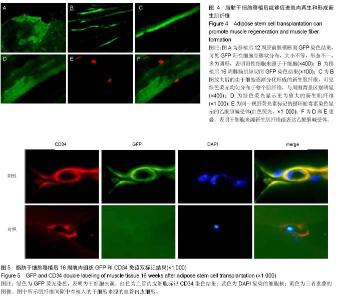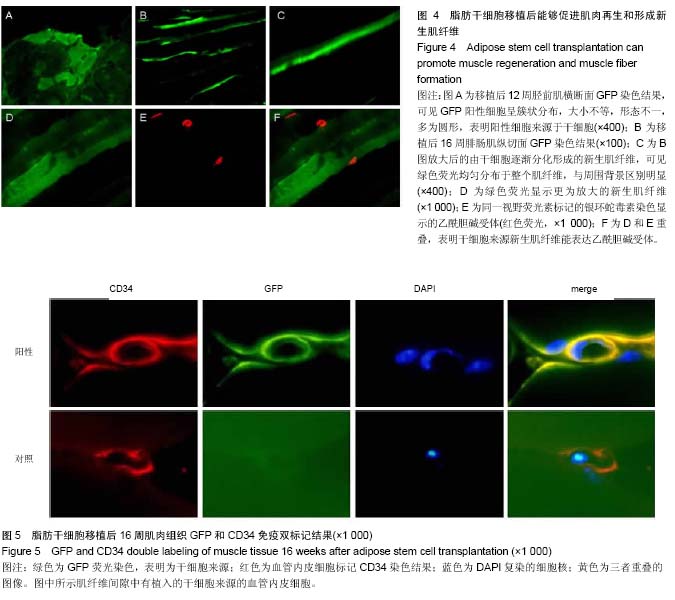| [1] Duchenne GB. Studies on pseudohypertrophic muscular paralysis or myosclerotic paralysis. Arch Neurol. 1968;19(6): 629-636.
[2] Emery AE. The muscular dystrophies. Lancet. 2002;359 (9307): 687-695.
[3] Corti S, Strazzer S, Del Bo R, et al. A subpopulation of murine bone marrow cells fully differentiates along the myogenic pathway and participates in muscle repair in the mdx dystrophic mouse. Exp Cell Res. 2002;277(1):74-85.
[4] Sampaolesi M, Torrente Y, Innocenzi A, et al. Cell therapy of alpha-sarcoglycan null dystrophic mice through intra-arterial delivery of mesoangioblasts. Science. 2003;301(5632): 487-492.
[5] Sampaolesi M, Blot S, D'Antona G, et al. Mesoangioblast stem cells ameliorate muscle function in dystrophic dogs. Nature. 2006;444(7119):574-579.
[6] Gimble JM, Katz AJ, Bunnell BA. Adipose-derived stem cells for regenerative medicine. Circ Res. 2007;100(9):1249-1260.
[7] Wang QZ,Zhou LL,Guo T,et al.Differentiation of human adipose-derived stem cells into neuron-like cells by Radix Angelicae Sinensis.Regen Res. 2013;8(35): 3353-3358.
[8] Zuk PA, Zhu M, Mizuno H, et al. Multilineage cells from human adipose tissue: implications for cell-based therapies. Tissue Eng. 2001;7(2):211-228.
[9] Vieira NM, Brandalise V, Zucconi E, et al. Human multipotent adipose-derived stem cells restore dystrophin expression of Duchenne skeletal-muscle cells in vitro. Biol Cell. 2008; 100(4):231-241.
[10] Acquistapace A, Bru T, Lesault PF, et al. Human mesenchymal stem cells reprogram adult cardiomyocytes toward a progenitor-like state through partial cell fusion and mitochondria transfer. Stem Cells. 2011;29(5):812-824.
[11] Deslex S, Negrel R, Vannier C, et al. Differentiation of human adipocyte precursors in a chemically defined serum-free medium. Int J Obes. 1987;11(1):19-27.
[12] Vieira NM, Brandalise V, Zucconi E, et al. Human multipotent adipose-derived stem cells restore dystrophin expression of Duchenne skeletal-muscle cells in vitro. Biol Cell. 2008;100(4): 231-241.
[13] Ferrari G, Cusella-De Angelis G, et al. Muscle regeneration by bone marrow-derived myogenic progenitors. Science. 1998; 279(5356):1528-1530.
[14] Gussoni E, Soneoka Y, Strickland CD, et al. Dystrophin expression in the mdx mouse restored by stem cell transplantation. Nature. 1999;401(6751):390-394.
[15] Colazzo F, Chester AH, Taylor PM, et al. Induction of mesenchymal to endothelial transformation of adipose- derived stem cells. J Heart Valve Dis. 2010;19(6): 736-744.
[16] Kojima T, Kanemaru S, Hirano S, et al. Regeneration of radiation damaged salivary glands with adipose-derived stromal cells. Laryngoscope. 2011;121(9):1864-1869.
[17] Liqing Y, Jia G, Jiqing C, et al. Directed differentiation of motor neuron cell-like cells from human adipose-derived stem cells in vitro. Neuroreport. 2011;22(8):370-373.
[18] Gu R, Hou X, Pang R, et al. Human adipose-derived stem cells enhance the glutamate uptake function of GLT1 in SOD1(G93A)-bearing astrocytes. Biochem Biophys Res Commun. 2010;393(3):481-486. |
